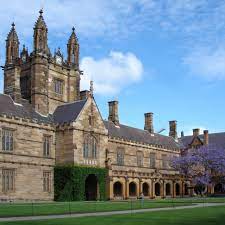A growing number of foreign students are choosing to study in Australia. It’s also not surprising, given that several Australian institutions consistently place in the world’s top 50. It’s not the cheapest choice, but it sure beats the alternative. Education standards are on par with the finest in the world, visa regulations are more relaxed, and immigration procedures have been simplified. There is zero cause for doubt. Which school should I go to, though? There are more than 1200 universities and colleges in Australia, providing access to more than 20,000 different programmes.
It might be difficult to identify the ideal educational institution and programme that fits your individual needs. The best place to begin is by researching some of the most prestigious universities, learning about the programmes they offer, and figuring out what kind of grades you’ll need to get in. This would provide you with an overall average score on the exam as well as a quick overview of the institutions’ ranking in comparison to others across the world.
The National University of Australia (ANU)
The Australian National University (ANU) was founded in 1946 and operates as a public research institution. Combined with Canberra College in 1960, it launched its first undergraduate degree programme that same year. The institution was split into four distinct departments: the Medical Research Institute, the Pacific Science Institute, the School of Social Science, and the School of Physical Science. In 1954, the institution established its first dorm specifically for graduate students and teachers.
ANU’s Council of the University is responsible for the upkeep of the university’s extracurricular and cultural offerings, which are well-known for their excellence. There are 7 different schools in the university. Each one is a part of a larger system wherein learning and research are intertwined. The Council’s 15 members manage the academic system and keep it running smoothly. The Australian National University (ANU) provides opportunities for students at all levels of education to earn degrees. In addition, there are eight dorms on campus that are fully equipped to accommodate students. The campus provides a tranquil setting in which students may study.
University of Sydney
The University of Sydney, Australia’s oldest and one of the world’s best institutions, was founded in 1850 as a public research institution. In addition, in 1858, it was granted a Royal Charter by Queen Victoria. Once the institution received the Royal Charter, the degrees it awarded were considered on par with those awarded to other universities in the United Kingdom. The faculty of Science, Social Work, Pharmacy, Arts, Economics, Architecture, and the recently established Faculty of Veterinary Science are all located on campus. Graduate and undergraduate courses include a wide range of disciplines, from the hard sciences to the humanities.
The curriculum covers a wide range of disciplines, including the arts and social sciences, the built environment, the business world, the healthcare system, the performing arts, and more. Furthermore, students get access to seasoned instructors and real-world experiences in the research sector. Furthermore, the institution often hosts guest lecturers who assist students in the better grasping course material.
University of Melbourne
The Institution of Melbourne, established in 1853 by Hugh Culling Eardley Childers, is the second-oldest university in Australia. It’s widely considered one of Australia’s finest educational institutions. Practical experience, in addition to academic instruction, is a priority at the University of Melbourne. It has an exceptional faculty that consistently pushes the boundaries of knowledge via groundbreaking research and discovery, making it a top-tier research institution.
The Florey Institute of Neuroscience and Mental Health, the Walter and Eliza Hall Institute of Medical Research, and the Grattan Institute are just a few of the eleven distinct academic institutions located on the grounds. Before deciding on a major, university students might have a broad understanding of several disciplines. Notable graduates include former U.S. Prime Minister Julia Gillard, Human Rights Commissioner Emeritus Professor Gillian Triggs, Political Commentator George Megalogenis, and Gardasil Vaccine Pioneer Professor Ian H Frazer.
New South Wales University (UNSW)
The Institution of New South Wales (UNSW) was founded in 1949 as an open research university with the goal of adapting to the changing needs of a rapidly developing technological society. The New South Wales University of Technology was the original name for the institution. Parliament of New South Wales, Sydney, granted the university statutory status in 1949. Once it reached this level, it was able to get funding for new campus development.
A year later, 46 students enrolled, and courses began. In order to better serve its students, UNSW created two separate campuses, one in Newcastle and one in Wollongong. Degrees at every level from bachelor’s to doctorate are available here at the institution. Courses are provided by several academic divisions, including the Law School, the Art School, the Business School, the Arts and Social Sciences Department, the Medical School, the School of Engineering and the School of Science. Students may tailor their college experience to their specific interests thanks to a wide variety of course offerings. As an added bonus, knowledgeable instructors guarantee that their pupils will acquire cutting-edge skills in their chosen industries.

